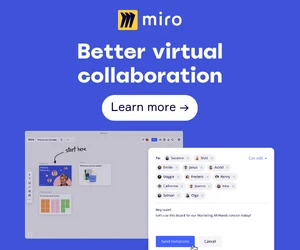In brief:
Software development is not a one-size-fits-all approach. Different strategies are required depending on the specific goals and needs of an organisation, such as organisational maturity, stage of ideation, and team skills. This blog will explore five common approaches to software development: War Room, Lean Startup, Agile Startup, Mature Startup and Enterprise Level Approach. We’ll look at the benefits and challenges associated with each strategy so you can choose the right Software Development Approach for your business.
As a business owner, it can be difficult to decide which software development approach is best for your company. There are many different types of software development approaches and each one has its own set of benefits and challenges. In this blog post, we will discuss the different types of software development approaches and how to choose the one that is best for your business.
What is a Software Development?
Software development is the process of creating, designing, and developing software applications for a variety of purposes. It involves coding, programming, testing, troubleshooting, and implementation of different types of software programs. Software development can be done using various approaches such as Agile, Waterfall, or Iterative. Each approach has different advantages and disadvantages that need to be considered when selecting an approach for the particular task or project at hand.
How has Software Development evolved?
Over the past few years, software development has evolved from the outdated Agile, Waterfall, or Iterative paradigm, into new approaches that allow teams to develop products faster and more efficiently. This evolution has led to the emergence of Software Development Methods, which are tailored to fit specific contexts.
The five common software development approaches are War Room, Lean Startup, Agile Startup, Mature Startup, and Enterprise Level. In the following sections we will explore each of these software development methods and how they can help you get the most out of your software product.
Miro: The Lightweight Tool to Get Your Team Organised
PROMOTION
Kanban has been the go-to framework for teams everywhere who are looking to organize their processes and get things done. Thanks to Miro’s Kanban Framework, it’s never been easier to make sure that everyone is working from the same plan – and done in style. With Miro’s intuitive drag and drop cards and boards, you can quickly map out sprints, track product launches, outline hiring processes, and so much more – all in one master template. The best part? You can also keep an eye on potential roadblocks and risk factors so you can stay ahead of the game. Make your team unstoppable with Miro Kanban Framework!
War Room Approach
Quick project completion with all team members in one place
The war room approach is well suited for small, co-located teams with a focus on core development. It involves assembling an agile team of developers who collaborate in a single room and work together towards building the product from conception to launch. This approach allows for quick iterations and feedback loops which leads to efficient development cycles.
Benefits of the War Room Approach include:
- Quicker project completion due to all members being able to work together simultaneously
- Ability to solve problems quickly in real time
- Easier communication between team members as they are all in one place
The main challenge of using this approach is that it can be difficult to scale up when more people are needed, this is because of the difficulty of staying organised when members are not physically present in the same room. It also requires more resources and time, such as travel to the war room location additional expenses and equipment for remote workers.
Lean Start Up Approach
Faster product launches with less invested upfront
This approach focuses on validating the concept and core product before committing too much time and resources to development. By using rapid prototyping and MVP (Minimum Viable Product) development cycles, this approach aims to quickly build, measure, learn, pivot, and repeat until the right product is developed without wasting precious time or resources. The downside is that it can be difficult to define the right MVP as well as how much time and resources should be spent on each cycle.
Benefits of Lean Start Up include:
- Faster product launch times due to testing products quickly
- Ability to adjust product features quickly based on customer feedback
- Cost effective since fewer resources need to be invested upfront
The main challenge with using this approach is that it may not be suitable for very complex projects as it requires rapid iteration cycles which may not always be possible with certain types of products or services. It can be difficult to define the right MVP as well as how much time and resources should be spent on each cycle.
Agile Startup Approach
Get feedback quickly and adjust your strategy on the fly
Agile startups balance flexibility with guardrails in order to build and roll out MVPs quickly while still ensuring quality control standards are met. This approach requires constant customer feedback as well as tight collaboration between teams so that each iteration is tailored towards addressing customer needs while also staying true to the original concept of the product.
Benefits of Agile Start Up include:
- Allows businesses to validate ideas quickly without having to invest too much resources upfront
- Allows businesses to adjust their strategies based on customer feedback quickly
- Can help reduce costs associated with long-term product development
The main challenge with using this approach is that it requires constant iteration cycles which can be difficult if you don’t have access to customer data or feedback regularly. The downside is that the process of building and rolling out MVPs can take longer than with other approaches.
Mature Startup Approach
Greater predictability of quality assurance and performance metrics
For mature startups with existing products, scrum/scaled agile strategies combined with Kanban support processes can help ensure continuous delivery and predictability in terms of quality assurance and performance metrics. These strategies allow for quicker launch times while still providing strong program management capabilities for existing products.
Benefits Of Mature StartUp include:
- Faster release cycles due to continuous delivery and feedback loops
- Ability to prioritise tasks quickly based on customer feedback
- Greater predictability of quality assurance and performance metrics
The main challenge with using this approach is that it requires a high degree of organisation across teams to effectively manage the agile process. This can be difficult for startups with limited resources or who are just getting started.
Enterprise Level Approaches
Ensures both continuity of service and innovation
For larger enterprises where continuity of service is paramount but there is also an innovation roadmap leading towards new products or services, strong program management practices combined with business continuity plans can help ensure that new projects do not interfere with existing operations while still allowing for innovation within new frameworks.
Benefits Of Enterprise Level Approaches include:
- Ability to manage multiple projects within a new framework without interfering with existing operations
- Improved resource utilisation due to better program management capabilities
- Reduced risk associated with innovative products or services since they are tested within an established end to end framework
The main challenge with using this approach is that it requires a large amount of planning and coordination between teams which can be difficult to manage in larger organisations. It also may limit the scope of innovation since the existing framework may constrain creative thinking.
Regardless of which Software Development Methodology you choose, it is important to remember that there is no one-size-fits-all approach for software product development. Each approach has its own benefits and challenges so it’s important to select the one that best meets your needs and capabilities. It is also important to remember to constantly evaluate and adjust your software development process over time as technology advances and customer expectations change.
Unlock Your Product Potential - Join the Think Product Group Community Today!
AFFILIATE AD
Get ready to join an incredible global network of product enthusiasts! Think Product Group Community is the ultimate platform for aspiring and experienced designers, developers and managers. Here you can take advantage of mentorship, connect with other passionate minds, explore free resources such as how-to videos and templates, and gain hands-on experience through the exclusive ‘Product Pioneers’ program and ‘Product Hack’ live events. Don’t miss out on this amazing opportunity!
Picking the Right Software Development Method
Tips on How to Pick the Right Software Development Method for Your Business
Choosing the right software development approach for your business is critical to achieving success. It is important to consider the objectives of the software, organizational maturity, and team skills when selecting a software development approach. Here are some tips on how to choose the right software development approach for your business:
1. Determine the software’s purpose and objectives:
First, you need to identify what the software is intended to do and the desired outcome that you want from it. This will help determine which software development approach would be most suitable for developing the software product.
For example, if the software is intended to provide a solution for an existing problem or to improve a current process, then the War Room approach may be more suitable as it focuses on tackling issues quickly and efficiently. Alternatively, if the software is intended to introduce an entirely new product or service, then the Lean Startup approach may be better suited as it encourages experimentation and exploration of ideas.
Similarly, if the software is meant to provide continuity of service and innovation, then the Enterprise level approach may be the best option as it allows for multiple projects to be managed without interfering with existing operations. Thus, it is important to carefully consider the software’s purpose and objectives before deciding on a software development approach.
2. Assess organisational maturity:
Before selecting a software development approach, it is important to assess the organizational maturity of the business. This involves understanding the existing processes and capabilities within an organization, such as their software development methodology, technology solutions, and personnel. In addition, organizations should assess their goals, resources available to them (such as budget and time), and the stage of software development they are in.
Before selecting a software development approach, it is important to assess the organizational maturity of the business. This involves understanding the existing processes and capabilities within an organization, such as their software development methodology, technology solutions, and personnel. In addition, organizations should assess their goals, resources available to them (such as budget and time), and the stage of software development they are in.
Ultimately, assessing organizational maturity can help you maximize the effectiveness of your software development process and ensure that you have the right resources in place to support the software development approach you select.
3. Consider team skills:
It is important to make sure that the software development approach matches the skills of your software development team. Different software development approaches cater to different levels of software development expertise and maturity, so it is important to select an approach that best fits the capabilities and competencies of your team.
For example, a war room software development approach may be more suitable for software teams with advanced software development experience, while an agile startup software development approach may be more suitable for software teams that are just starting out. On the other hand, if the software is being developed by an enterprise-level organization, then a mature software development approach might be more appropriate. The key is to match the software development approach to the team’s skill level for maximum effectiveness and efficiency.
4. Consider the timeline:
When selecting a software development approach, it is important to consider the timeline for software development. Some software development approaches are more time-intensive and require more resources than others. War room software development is a good example of this; it typically involves bringing together software development experts from different departments in an organization, which can be both time-consuming and resource-intensive.
On the other hand, an agile startup software development approach might be better suited to software teams with shorter timelines due to its focus on rapid iteration and testing. For enterprise software projects, a mature software development approach might be best given its emphasis on scalability and stability. Taking time into consideration when choosing a software development approach is key to ensuring software products are delivered on time.
By following these tips and selecting the right software development approach for your business, you can ensure that your software product will be developed in a way that meets your objectives and achieves success.
In conclusion:
Choosing the right software development approach for your business is essential to ensure a successful software product. To make this decision, it’s important to consider factors such as organizational maturity and capabilities, software development goals and resources available, team skillsets and expertise, as well as timeline constraints. By taking all of these into account when selecting an appropriate software development approach that best fits your organization’s needs, you can be sure that the software product will meet objectives efficiently while still being delivered on time. With careful consideration of each factor involved in choosing a software development approach, businesses can have confidence knowing they are making the most informed decisions with regard to their software products.
Reference Sources
- None








